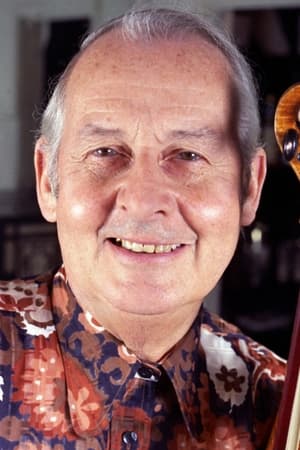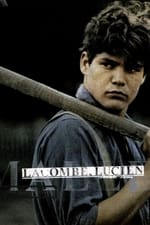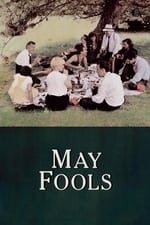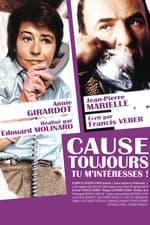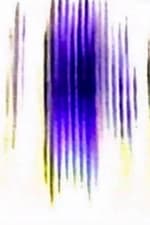Personal Info
Known For Sound
Known Credits 15
Gender Male
Birthday January 26, 1908
Day of Death December 1, 1997 (89 years old)
Place of Birth Paris, France
Also Known As
- Stephane Grappelly
Content Score
100
Yes! Looking good!
Login to report an issue
Biography
Stéphane Grappelli (26 January 1908 – 1 December 1997, born Stefano Grappelli) was a French jazz violinist. He is best known as a founder of the Quintette du Hot Club de France with guitarist Django Reinhardt in 1934. It was one of the first all-string jazz bands. He has been called "the grandfather of jazz violinists" and continued playing concerts around the world well into his eighties.
For the first three decades of his career, he was billed using a gallicised spelling of his last name, Grappelly, reverting to Grappelli in 1969. The latter, Italian spelling is now used almost universally when referring to the violinist, including reissues of his early work.
Stéphane Grappelli (26 January 1908 – 1 December 1997, born Stefano Grappelli) was a French jazz violinist. He is best known as a founder of the Quintette du Hot Club de France with guitarist Django Reinhardt in 1934. It was one of the first all-string jazz bands. He has been called "the grandfather of jazz violinists" and continued playing concerts around the world well into his eighties.
For the first three decades of his career, he was billed using a gallicised spelling of his last name, Grappelly, reverting to Grappelli in 1969. The latter, Italian spelling is now used almost universally when referring to the violinist, including reissues of his early work.
Grappelli was born at Hôpital Lariboisière in Paris, France, and christened with the name Stefano. His father, Italian marchese Ernesto Grappelli, was born in Alatri, Lazio, while his French mother, Anna Emilie Hanoque, was from St-Omer. Ernesto was a scholar who taught Italian, sold translations, and wrote articles for local journals. Grappelli's mother died when he was five, leaving his father to care for him. Although he was residing in France when World War I began, Ernesto was still an Italian citizen, and was consequently drafted into the Italian Army in 1914.
Having written about American dancer Isadora Duncan, who was living in Paris, Ernesto appealed to her to care for his son. Stéphane was enrolled in Duncan's dance school at the age of six, and he learned to love French Impressionist music. With the war approaching, Duncan fled the country; she turned over her château to be used as a military hospital. Ernesto subsequently entrusted his son to a Catholic orphanage. Grappelli said of this time: " I look back at it as an abominable memory ... The Place was supposed to be under the eye of the government, but the government looked elsewhere. We slept on the floor, and often were without food. There were many times when I had to fight for a crust of bread." ...
Source: Article "Stéphane Grappelli" from Wikipedia in English, licensed under CC-BY-SA 3.0.
Stéphane Grappelli (26 January 1908 – 1 December 1997, born Stefano Grappelli) was a French jazz violinist. He is best known as a founder of the Quintette du Hot Club de France with guitarist Django Reinhardt in 1934. It was one of the first all-string jazz bands. He has been called "the grandfather of jazz violinists" and continued playing concerts around the world well into his eighties.
For the first three decades of his career, he was billed using a gallicised spelling of his last name, Grappelly, reverting to Grappelli in 1969. The latter, Italian spelling is now used almost universally when referring to the violinist, including reissues of his early work.
Stéphane Grappelli (26 January 1908 – 1 December 1997, born Stefano Grappelli) was a French jazz violinist. He is best known as a founder of the Quintette du Hot Club de France with guitarist Django Reinhardt in 1934. It was one of the first all-string jazz bands. He has been called "the grandfather of jazz violinists" and continued playing concerts around the world well into his eighties.
For the first three decades of his career, he was billed using a gallicised spelling of his last name, Grappelly, reverting to Grappelli in 1969. The latter, Italian spelling is now used almost universally when referring to the violinist, including reissues of his early work.
Grappelli was born at Hôpital Lariboisière in Paris, France, and christened with the name Stefano. His father, Italian marchese Ernesto Grappelli, was born in Alatri, Lazio, while his French mother, Anna Emilie Hanoque, was from St-Omer. Ernesto was a scholar who taught Italian, sold translations, and wrote articles for local journals. Grappelli's mother died when he was five, leaving his father to care for him. Although he was residing in France when World War I began, Ernesto was still an Italian citizen, and was consequently drafted into the Italian Army in 1914.
Having written about American dancer Isadora Duncan, who was living in Paris, Ernesto appealed to her to care for his son. Stéphane was enrolled in Duncan's dance school at the age of six, and he learned to love French Impressionist music. With the war approaching, Duncan fled the country; she turned over her château to be used as a military hospital. Ernesto subsequently entrusted his son to a Catholic orphanage. Grappelli said of this time: " I look back at it as an abominable memory ... The Place was supposed to be under the eye of the government, but the government looked elsewhere. We slept on the floor, and often were without food. There were many times when I had to fight for a crust of bread." ...
Source: Article "Stéphane Grappelli" from Wikipedia in English, licensed under CC-BY-SA 3.0.
Sound
|
||||||
|
||||||
|
||||||
|
Acting
|
|||
|
|||
|
|||
|
|||
|
|||
|
|||
|
|||
|
|||
|
|||
|
